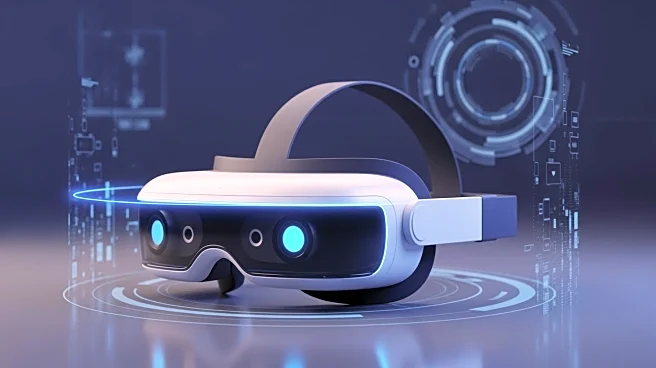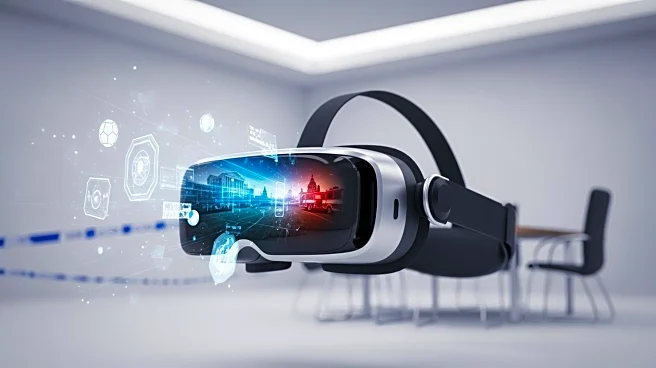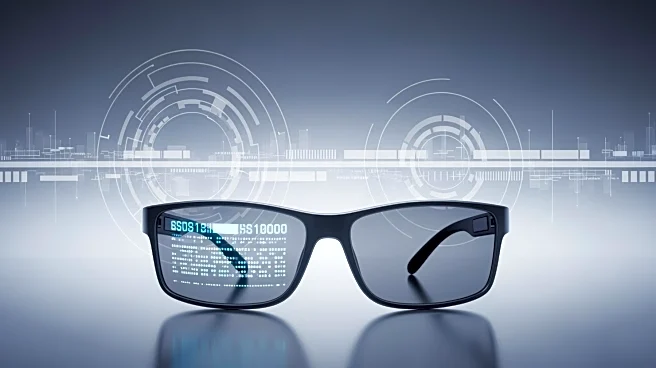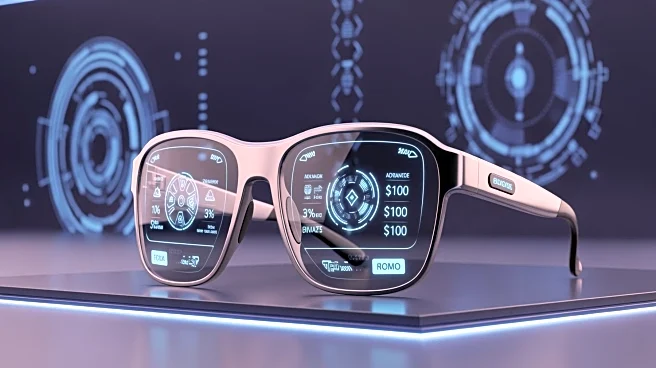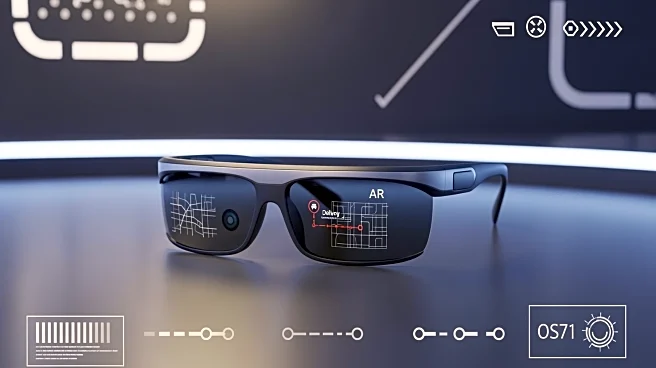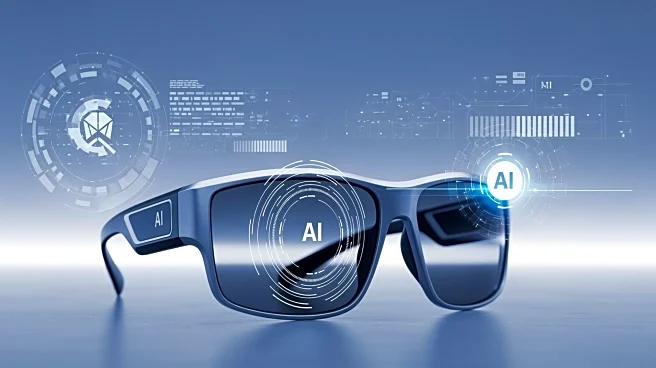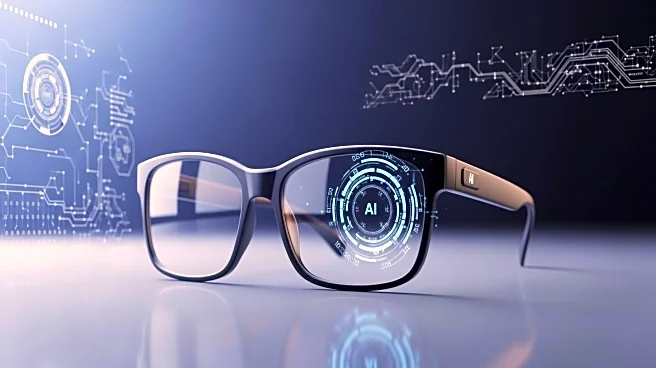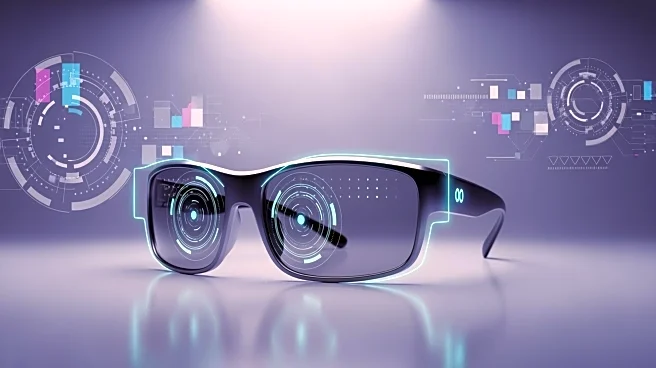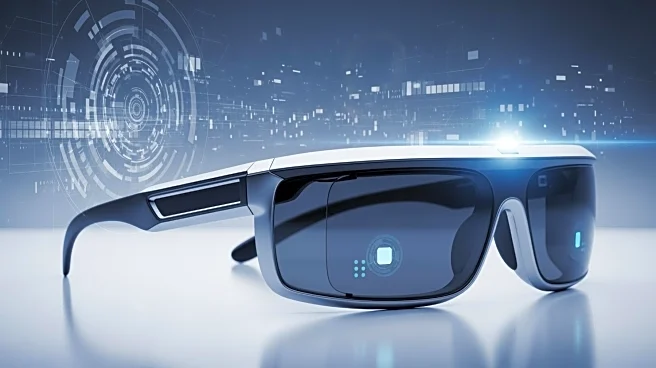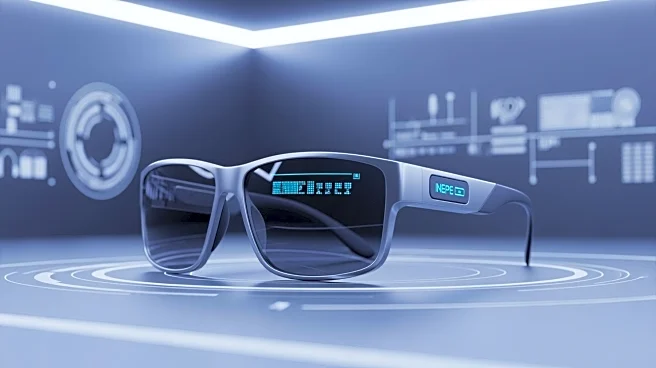What's Happening?
Meta and Oakley have introduced new augmented reality (AR) devices aimed at enhancing user experience in various fields. Meta's latest offering, the Ray-Ban Display, is priced at $799 and includes a single-eye
display with a neural wristband for quick interactions. This device is designed to provide lightweight app overlays and live captions, pushing smartglasses towards real app utility. Additionally, Meta has updated the Ray-Ban Gen 2, which now offers twice the battery life and 3K video recording capabilities, allowing creators to capture more content without needing a pocket battery. Oakley has launched the Meta Vanguard, a sport-focused AR device tailored for athletes and cyclists. It features a heads-up display optimized for speed, routes, and real-time metrics, with durable frames suitable for outdoor use. Samsung is also preparing to showcase its smart glasses through pop-up demos, emphasizing style and hands-free notifications.
Why It's Important?
The introduction of these AR devices marks a significant shift in the technology landscape, as they transition from prototypes to practical tools for everyday use. The enhancements in battery life and user interface, such as wristband controls, reduce friction and make all-day wear more feasible. These developments are likely to generate buzz among early adopters and tech enthusiasts, potentially influencing consumer behavior and driving demand for AR technology. The focus on sports and outdoor activities by Oakley suggests a growing market for AR applications in fitness and navigation, which could lead to new opportunities for athletes and outdoor enthusiasts. As major brands like Meta and Samsung push for wider availability, the AR market is poised for expansion, offering consumers more choices and potentially lowering costs as competition increases.
What's Next?
With the retail dates for Samsung's smart glasses nearing, consumers can expect more opportunities to experience AR technology firsthand through demos and pop-up events. This increased accessibility may lead to broader adoption and integration of AR devices into daily life. As the technology evolves, developers and creators are likely to explore new applications and content, further enhancing the utility and appeal of AR devices. The focus on location-based storytelling and interactive experiences, as seen with Niantic's Peridot, suggests a trend towards more immersive and personalized AR content. This could pave the way for innovative uses in tourism, education, and entertainment, expanding the scope of AR technology beyond its current applications.
Beyond the Headlines
The advancements in AR technology raise important questions about privacy and data security, as these devices often rely on location tracking and personal data to function effectively. As AR becomes more integrated into daily life, there will be a need for clear regulations and guidelines to protect user information and ensure ethical use. Additionally, the cultural impact of AR technology, particularly in terms of how it alters human interaction and communication, warrants further exploration. As AR devices become more prevalent, they may influence social norms and behaviors, leading to new challenges and opportunities in how people connect and engage with the world around them.
